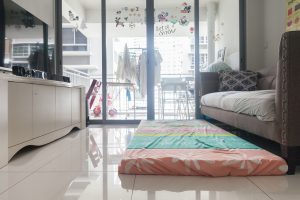As spaces go, the atrium of Lucky Plaza is not a particularly welcoming one. The mall lighting is harsh, its tiles and pillars starkly white, making the overall effect one of aggressive brightness. There are no benches; it’s a space meant to discourage lingering, a place that people already on their way to someplace else pass through. But Bhing is telling me about the first time she stood waiting in this very spot, on a Sunday morning in December 1995.
“I stood by the information counter to wait for my friend because I didn’t know where to go,” she says.
“I even remember what I was wearing that day: shorts, which I had cut from a pair of pants, a t-shirt, and slippers. I had borrowed all of these from my sister.”
It was Bhing’s first day off in the eight months since she arrived in Singapore. Like thousands of her fellow countrywomen, she had come to seek employment here as a domestic worker, leaving her three young children—aged one, two, and four at the time—in the care of her family back in Manila. When she was finally able to afford a day off (many domestic workers go with little or no pay for the first few months of their employment, so as to pay off thousands of dollars in agents’ fees), she went to the one place she knew “all the Filipinos go”.
But that was over two decades ago, and the woman standing in front of me is a far cry from the nervous 22-year-old in hand-me-downs, waiting for a friend to come get her. In fact, this Saturday afternoon, our positions are reversed: I’m the newcomer, and she’s here to take me around Lucky Plaza.
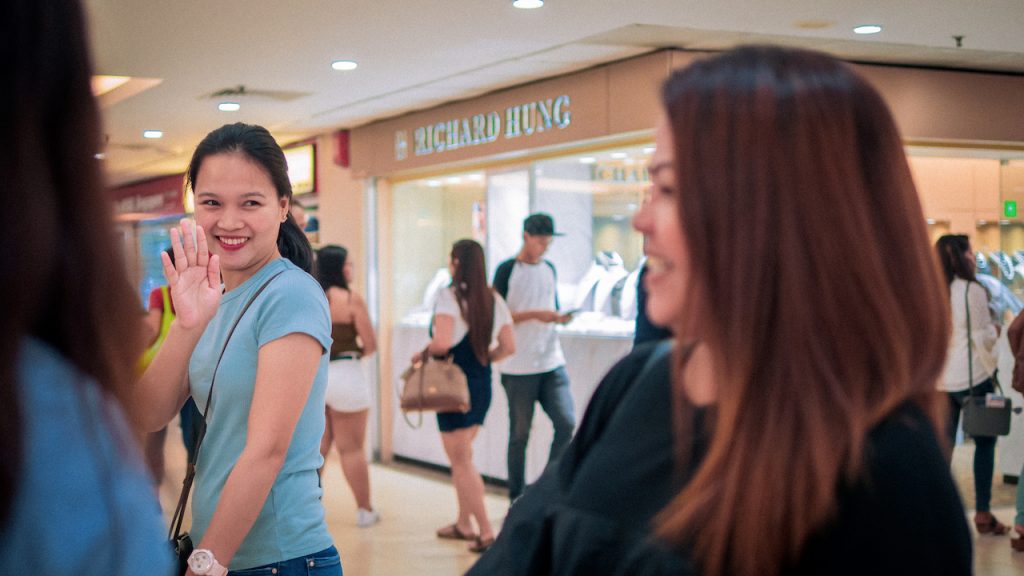
It’s not the first time I’ve been to the mall. I even worked in an office here very briefly, after my ‘A’ Levels, but it’s the first time I’ll be going around with a guide. This, as I will learn, makes all the difference.
The mall opened in 1981, just as Orchard Road was beginning its transformation into Singapore’s iconic shopping belt. Like its sister malls from that decade, Far East Plaza and Far East Shopping Centre, Lucky Plaza looks its age, from its matte grey-beige facade with the iconic yellow lettering to the cacophony of mismatched shopfronts: 7-11, Baleno, a sex shop. Next to newer, glossier neighbours like ION Orchard or Mandarin Gallery, with their sheen of dark glass and developer money, it is almost defiantly unlovely.
At its opening, however, the mall was among the first of its kind here—multi-storey and fully air-conditioned. When the Foreign Maid Scheme was introduced in 1978, there were around 5,000 foreign domestic workers in Singapore; by 1988, this number had swelled to 40,000.
Over the years, as more Filipino migrants of all ages and professions—musicians and waiters, marketers and hotel concierges, nurses and Pilates instructors—came to make a living in Singapore, the mall’s money-changers and souvenir shops were replaced by outfits catering to the needs of the burgeoning community. In time, it became that community’s epicentre.
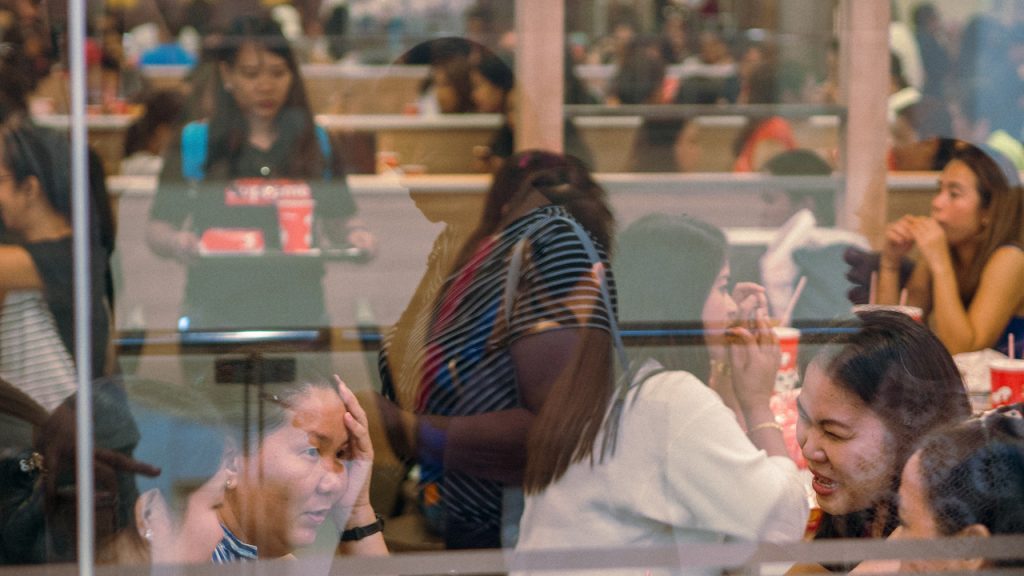
The mall has several other Filipino eateries; the oldest, Kabayan Restaurant, has been open for decades, and has probably served every Pinoy on the island and then some, but Bhing insists this is the best. According to her, the food here “tastes like home, like something my grandmother would cook.” (‘Mamita’ is Tagalog for ‘grandmother’.)
$6 gets you rice with two dishes and a drink, so we order several plates to share. We get adobo, the vinegar-soy sauce concoction which is the Philippines’ unofficial national dish; menudo, a slightly sweet pork and tomato stew; monggo, a thick, savoury green bean soup that reminds me of porridge, and my personal favourite, kare-kare, a meat and vegetable stew that’s been richly flavoured with peanuts. None of it is Instagrammable, but all of it is warming and delicious.

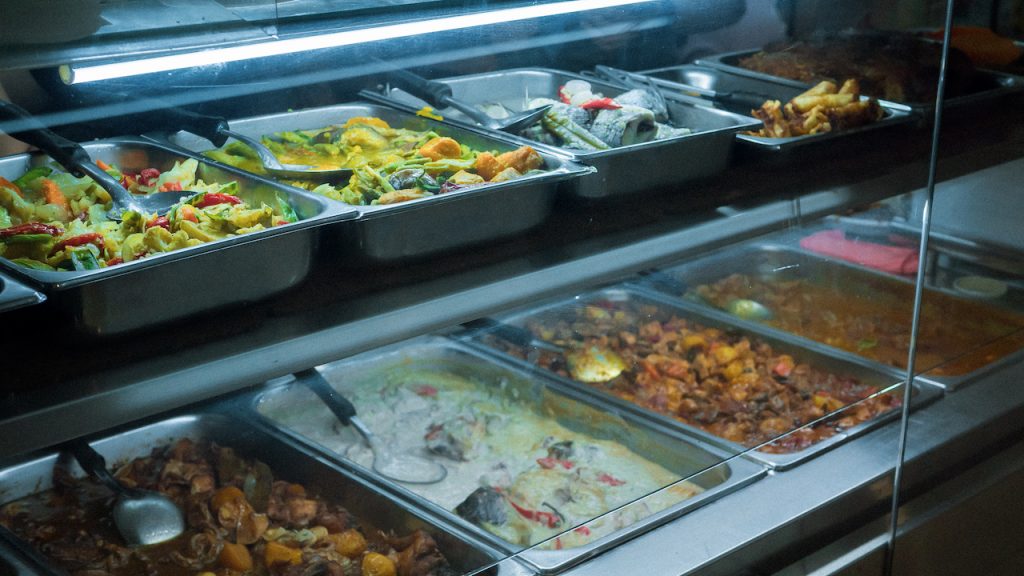
“This is my father’s dish. I’m not a very good cook, there are a lot of dishes I don’t know how to make,” she says, gesturing towards the kare-kare. “But menudo is from my childhood. It reminds me of him.”
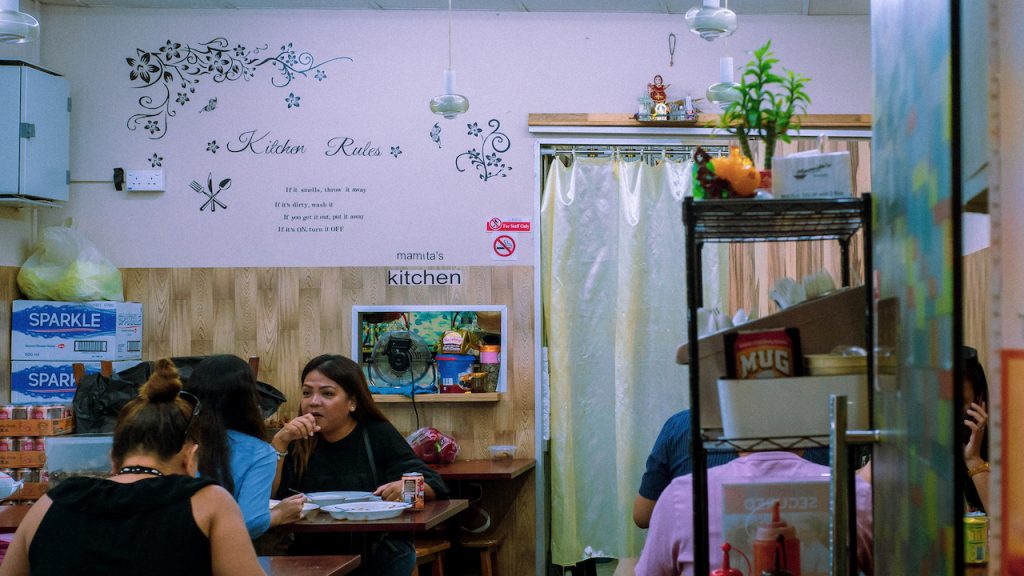
The lower floors, which draw more tourist traffic, cater to this demographic. Most shops here sell souvenirs, clothes, and cheap electronics, and have a somewhat different feel from the rest of the mall. A corner of the first and second floors, however, is dominated by jewellers, selling mainly gold jewelry. I’ve always found this strange, considering domestic worker salaries aren’t exactly high, so I ask Bhing about it.
“Many Filipinos see gold as an investment,” she explains. “We keep it for our children or to pawn it if we need money.”
In this vein, the jewelers have developed payment systems to cater to their customers’ limited means, with deposits starting from as low as $20, and the option of paying in instalments over several months, without interest. The customer gets their gold when everything is fully paid up.
The second and third floors have a more varied mix of tenants, but are also where most of the remittance agencies are located. It’s a Saturday afternoon, so it’s fairly quiet, but Bhing tells me that the queues on Sundays can run for up to two hours.
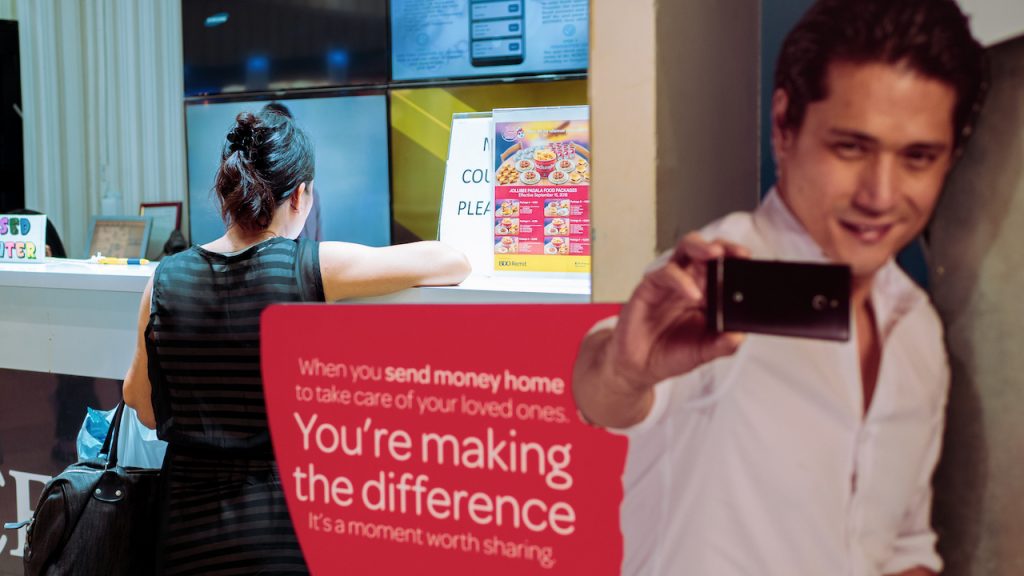
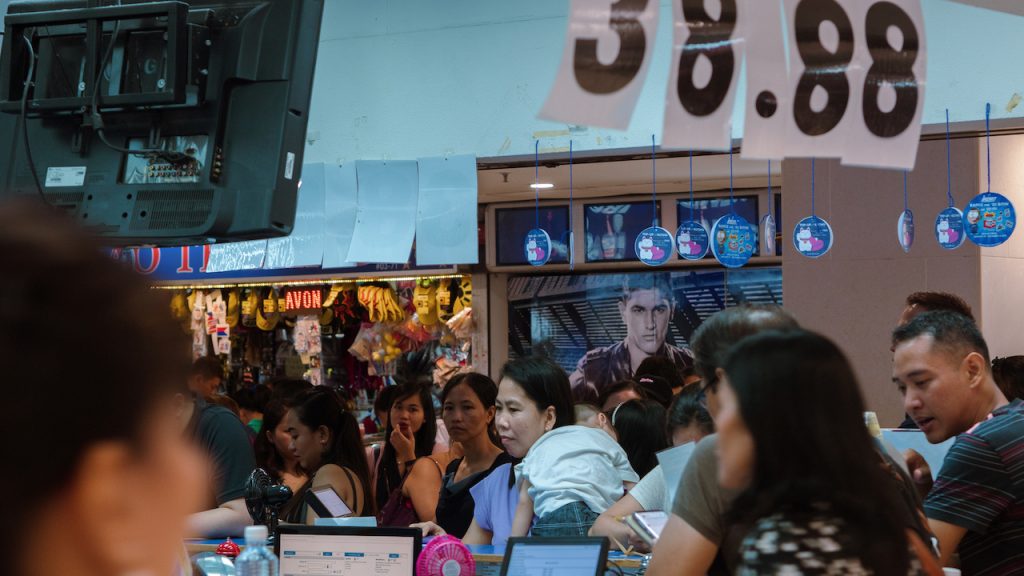
Prices at the salons are relatively affordable, with the bonus assurance of a stylist who shares your native language. Bhing tells me she’s been coming to one particular salon for years to get her hair done, explaining that beauty standards in the Philippines favour straight hair and fair skin. I’ve never gotten a manicure before, so I have no basis for comparison, but she recommends that I give Filipino manicurists a try.
“They’re very particular and will do a good job,” she says.
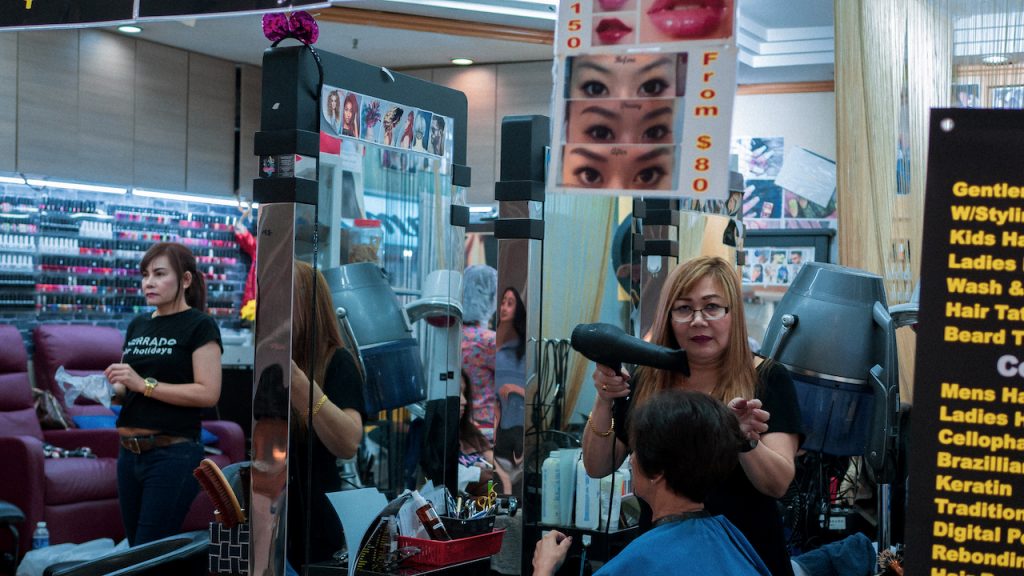
Most, if not all, of these have a ‘homesickness premium’ on them, costing two to three times what they normally would in the Philippines. Bhing’s favourite, a jar of Cheez-Wiz, is around $7; it would cost about $3 back in Manila. Having paid a truly embarrassing amount for roti prata in London, however, I know that’s not always a successful disincentive. When the stomach aches for home, the wallet will obey.
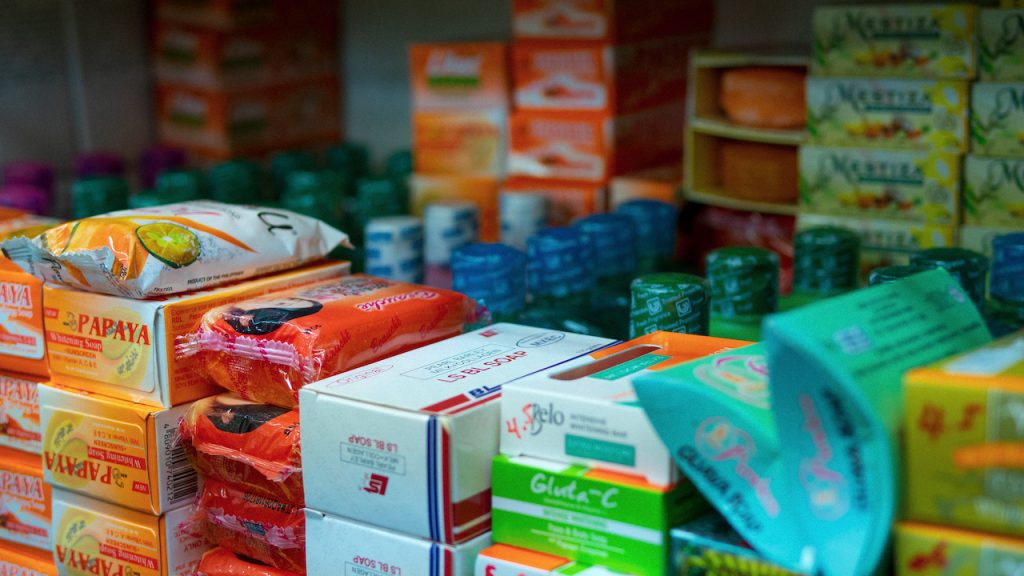
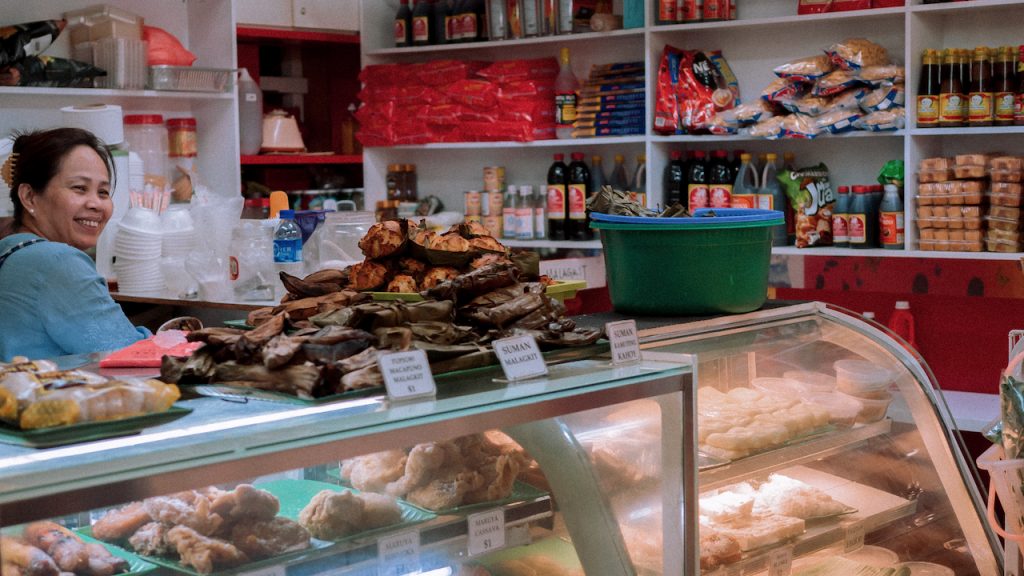
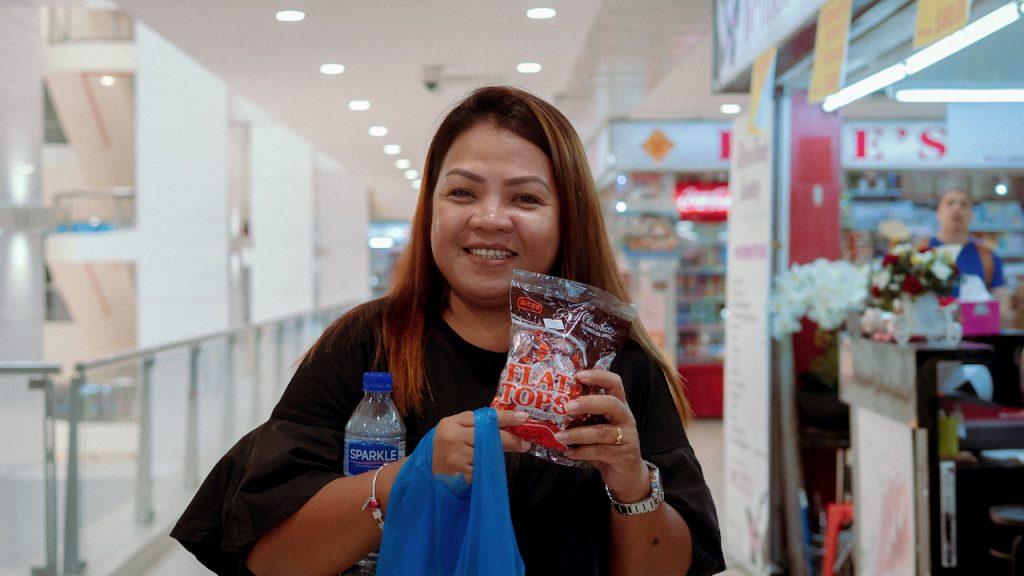
There are people everywhere you turn: sitting on the first-floor balcony, in the corridors, in the stairwells. Every available inch of floor space has been turned into a picnic spot, with women eating, tapping away at their phones, or just hanging out. There are barriers set up by the escalators to help manage the human traffic.
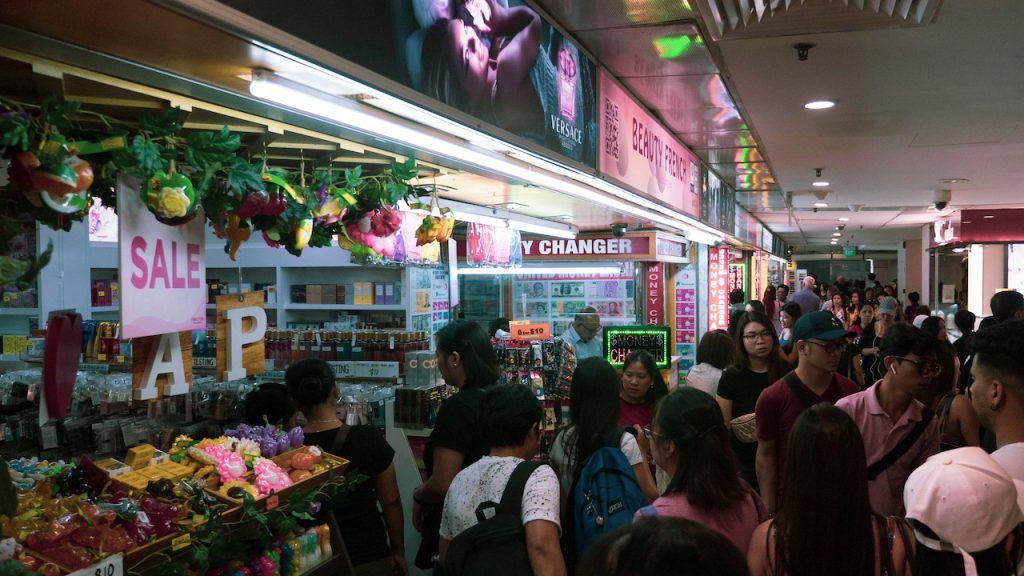


We start at the sixth floor and work our way down. The group catches me eyeing the bright red Jollibee storefront—the famous fried chicken chain has two outlets in the building, one on this floor and the other in the basement—and explains that they always celebrate birthdays there.
“KFC and Popeye’s and all are nice, but they’re just not the same,” they tell me.
From there, we drop in at Sunshine’s Salon, run by Susan, a friend of the group. The hole-in-the-wall space can seat just one client at a time—Susan is the only employee and does everything herself, from perms to manicures—but the battered black sofa at the front of the salon is open to anyone passing by.

As we walk, Gilda and Ellen—who have been in Singapore for 26 and 30 years respectively—talk me through changes in the mall over the decades. How the fourth floor used to be occupied by a hypermart called G.P, which contained everything from remittance services to a restaurant until it closed in the early 2000s. How Kabayan (the old restaurant) used to be favoured by seamen on their days off. How visitor numbers swelled after the mandatory day off legislation was passed in 2012.
How the ukay-ukay (secondhand clothes) shops sprang up over the last few years, as though transplanted straight from the malls in Manila, and how the queue when Jollibee first opened snaked all along the corridor into the vacant unit next door. How the Internet cafes bloomed with the dot-com bubble and disappeared as the world discovered smartphones and Wi-Fi. How that shop in the corner used to be called Ilo Ilo. How that old cafe is now gone.
“The shops change, the tenants come and go,” says Ellen. “But the people who come here don’t.”
More than once, we find ourselves stopping randomly in the middle of the corridors to chat. At one point, we spend nearly 20 minutes talking in front of Leonardo’s, a bag shop on the third floor, prompting the owner, Ida, to come out and say hello. Although the group has never met her before, they gamely strike up conversation.
“How long have you had your shop here?” I ask.
“Oh, about 30 years.”
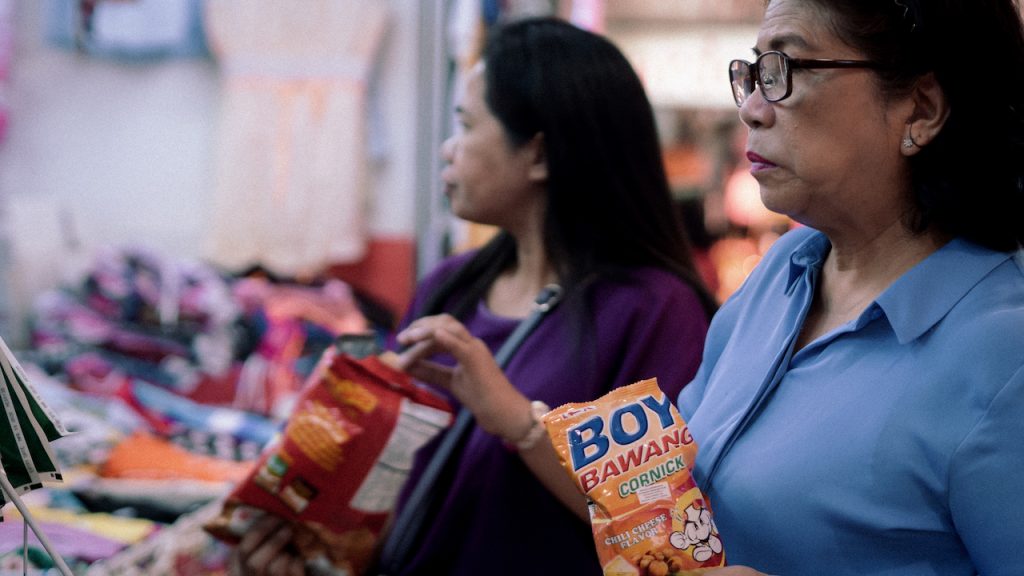
In the same place for 30 years.
How many shopkeepers can say the same today? How many buildings can we say the same of, for that matter?
The Orchard Road of today looks almost nothing like the one of my childhood. The old Borders at Wheelock Place is gone, as is the Planet Hollywood at Liat Towers, and the John Little somewhere on the Somerset stretch. I barely recall what used to sit on the sites of ION Orchard or 313 or the Apple store, though these are all less than 10 years old.
That I can’t remember these bothers me, as though I, too, suffer from the amnesia that drives so much of our country’s development ethos. Nor is the irony lost on me: that a migrant community, which in law and practice is regarded as fundamentally transient, has nonetheless built something so enduring in a city addicted to making itself over.
When I first pitched this story, I thought I’d be writing about the significance of Lucky Plaza to the local Filipino community. I realise now that that wasn’t quite right: Lucky Plaza is the local Filipino community. It’s woven into who they are and how they live here, in the way the spaces we inhabit make us, too.
Ray Oldernburg, the American sociologist, has written about how informal public gathering spaces are vital to community life. Our homes and workplaces, the private spaces where we spend most of our time, are what he calls first and second places. The ‘third place’, by contrast, “hosts the regular, voluntary, informal, and happily anticipated gatherings of individuals beyond the realms of home and work … it promotes social equity by leveling the status of guests, provid[es] a setting for grassroots politics, creat[es] habits of public association, and offer[s] psychological support to individuals and communities.”
Lucky Plaza is such a third place to the local Filipino community. It’s the core from which all activity spirals out; it’s where you go whether you’re 23 and newly arrived and desperately homesick, or 61 and thinking of retiring soon, and just want some really good fried chicken. It’s where you’ll find people who know where you come from, whose lilting accent is your own; the bridge between the home you chose and the one you left behind, the space you might find yourself loving less over time (the noise, the crowds) but can’t help but be drawn back to anyway.
In a place where migrant workers are so often invisible, in which they are often excluded from public spaces and reminded daily of their otherness, this shabby, noisy, homely mall is theirs.
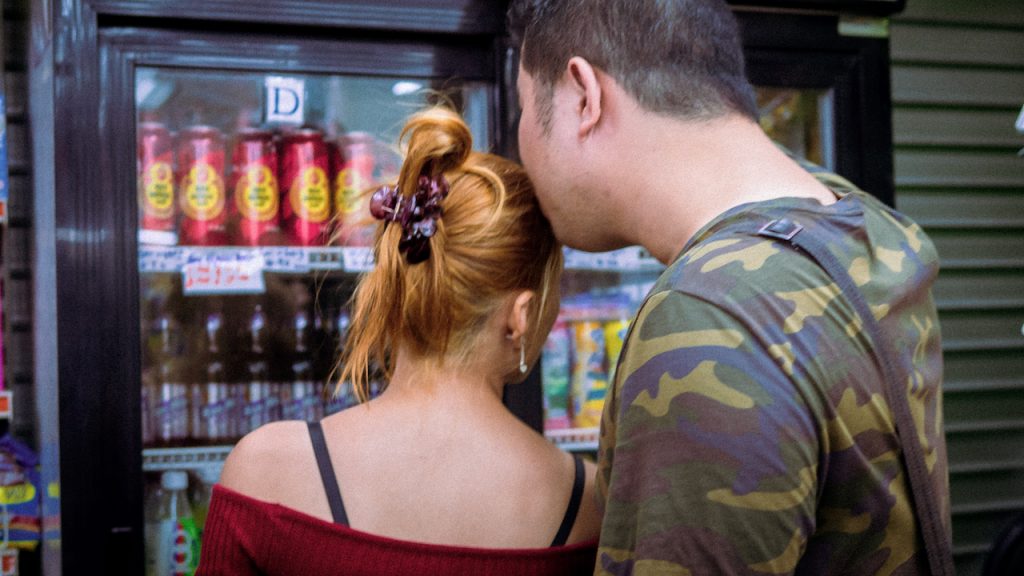
I’m standing at the first-floor balcony, watching the crowds beneath me make their way to dinner. From my vantage point, everyone else looks to be on their way to someplace else; in a few minutes I’ll be along too, pulled along reluctantly into the next week.
For now, though, I’m here, on the border of the world I’ve just spent the last few hours in, looking out at the one I’ll be walking back to. The lights behind me are still on.






